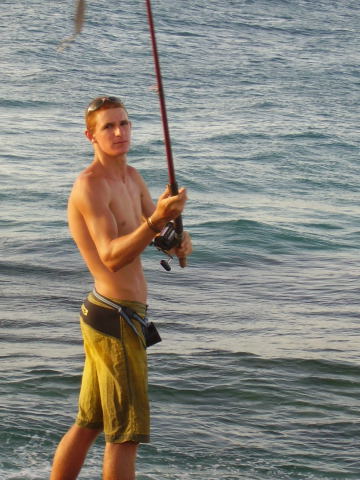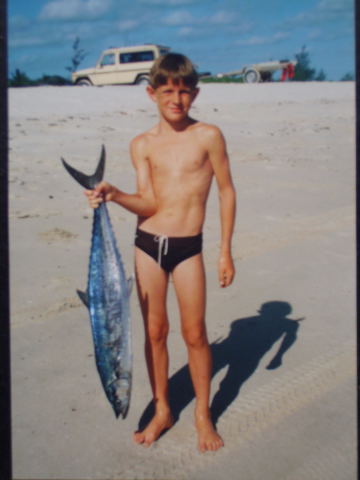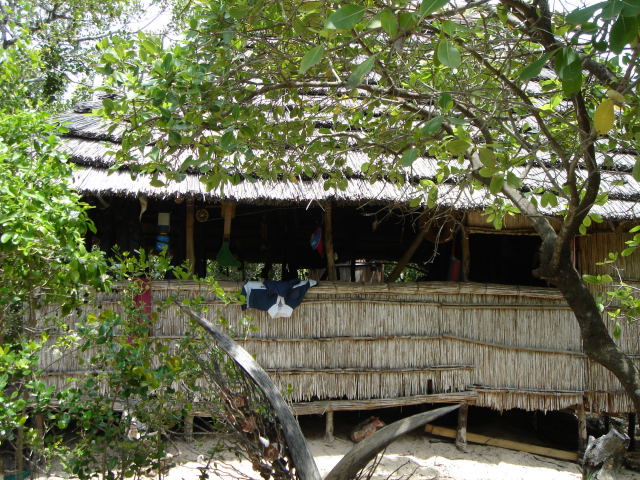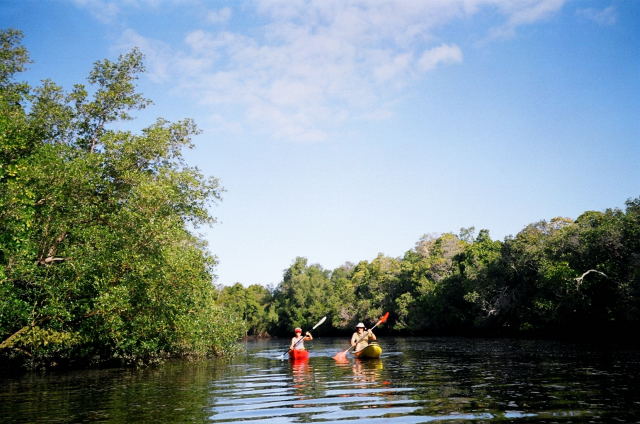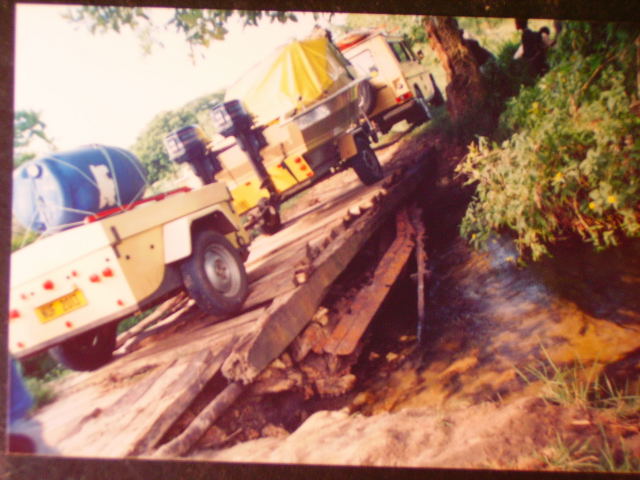|
|
|||||||||||||||||||||||||||||||||||||||||||||||||||
|
|||||||||||||||||||||||||||||||||||||||||||||||||||
|
Greeff
Contents 1. Greeff Genealogy - Greeff DNA
Project
Greeff Genealogy "Drie Greeff Stamvaders?" Interesting new developments, indeed, this month. The Greeff DNA project is making good progress and we are ready to collect DNA samples from specially selected Greeff people from right around the world. Here is how the DNA Project works, and what is aims to achieve: 1. All paper records that we have seen, world wide, indicate that all people whose surname is Greeff can be traced back to Germany. This common source of origin suggests a common ancestor, from whom we all descend. It is the direct aim of the Greeff DNA Project to find the Most Recent Common Ancestor (MRCA) for all Greeff people. 2. The existing paper records point in the direction of a single MRCA, but the paper records are incomplete in several ways. Firstly, many records were destroyed by time and various disasters, which include both World Wars. Secondly, the records are incomplete in the sense that while they may actually exist, we do not know where to find them. Thirdly, the records are incomplete in the sense that they do not necessarily give the full picture of someone's parentage. Children were sometimes (eg during the Anglo Boer War) adopted and raised as Greeff children, without ever being told that they had been adopted. Then, of course, there is the odd baby who has red hair, like the neighbour, and the mother's husband is never told who the child's biological father is! 3. DNA is a term that includes a vast topic, of which we study only the tiniest little bit: The Y-Chromosome. There is something in the DNA string that each that every person has and that causes each of us to have a nose or an ear, finger, toe, spleen, and so on. In other words, there are bits of all of us that are identical, to some extent. One of these bits is the Y-Chromosome. The Y-Chromosome makes babies male, and is passed from father to son in a virtually identical form. (The X-Chromosome makes babies female, and behaves differently from the Y-Chromosome.) The Y-Chromosome might change, minutely, once every 500 generations or so, and that makes no real difference to the 10 or 20 generations we want to look at. In all Greeff men there should be a Y-Chromosome that is identical in each and every one of them, because it was passed down from father to son, for fifty generations, with no difference at all. 5. The same is true of the Smit, Viljoen, and other families, except that they have a different Y-Chromosome from the Greeff Y-Chromosome. In essence, we can, for practical purposes, sort Y-Chromosomes into families, by surname, because Y-Chromosomes are passed from father to son, exactly like a surname. Daughters are different, because they have X-Chromosomes, and they tend to change their surnames.
6. To sum up, the
Greeff DNA Project will compile a family tree that is built on
Y-Chromosome patterns. We invite all Greeff men who want to be
included in this tree to contact Francois Greeff by email, at
Greeff@Greeff.info and he
will let them know what to do. A Lab Sample Kit will be mailed to participants, who then send the lab sample to a DNA Laboratory in America, or to Professor Andre Greeff in Pretoria. He is a Professor of Genetics, and will do some of the Y-Chromosome analyses for the project.
In order to make a
Y-Chromosome family tree we strart with what we know of the Tree
that was built on paper records. Some people will be specially asked
to participate in the project, simply because they happen to be "in
the right place at the right time". We are trying to get at least
two or three people from every major branch of the Greeff
family. The major branches are: During the analysis of the Greeff people of the world that was done to be able to include people from every branch, an important discovery was made. Matthias Greeff went to SA form Germany in 1680. Friedrich Greeff went to SA from Germany around 1780. Hugo Greeff and his relatives went to England, Canada and America from Germany around 1880. What we did not really know was that Peter Greeff went to SA from Germany in 1734. Actually, it was known, but his descendants were considered to have 'died out', so that none of them are alive today. Last month Annelie Els sent the Greeff family concrete evidence that some of Peter Greeff's descendants were still alive in 1774, almost half a century later. Peter had three sons that we know of, Pieter Greeff, Jurgen Greeff and Hans Jacob Greeff, but we know nothing of their children. Intensive research is being planned to see if any living Greeff people can be traced back to Peter Greeff. There are very many people in the Greeff family who are Jurgen (or Jurie) and several called Pieter too. Could some of them possibly have been sorted into another branch, incorrectly? Matthias Greeff, Friedrich Greeff and Peter Greeff give rise to the question: "Is daar DRIE GREEFF STAMVADERS in Suid Afrika?"
Last month's Research Contributions The success and continued growth of the Greeff Family Tree is the consequence of hundreds of people who contribute, directly and indirectly to Greeff research. During March alone the people in this list contributed to various Greeff research projects. I thank them all warmly for their interest, their trouble, and for their contributions.
I apologise to those people who helped during March, and whose names I have inadvertently omitted from the list. I thank all those people who contributed to the Greeff Study Fund too. Their names are listed in our 'Kuiernet' letter of the month.
OF KINGS, FATHERS AND SONS
Jan Greeff,
with Kingfish One of my proudest moments during these golden years was when the children, even when they knew that we had few or no fresh fillets in the refrigerator, enthusiastically and joyfully released their edible catch. Pieter Greeff, with Kingfish
Two incidents, each involving one of the boys, I will never forget. Perhaps I would have preferred to, if I could! The first of these incidents involved our oldest son, Pieter. It happened on a spot where you have to balance yourself among sharp pinnacles of hard, treacherous and toxic sandstone to launch your lure into water covering beautiful reef while the surf pounding the vertical rockface would douse you from head to toe every few minutes. I believe that the first rock and surf angler ever to fish from here was Pieter. It is easily the most productive as well as the most uncomfortable fishing spot that I have ever had the privilege to visit. My son discovered the spot one rainy, windswept day. We had not been catching anything for days on end. In frustration, he clambered his way onto the rough sandstone. His first cast produced a small Ignobilis of about 3kg and so did the second. He called me, triumphantly holding each fish up for me to see before releasing it, then proceeded to lure the third one to his plug. But that was when things went wrong. I was just preparing to join him from where I was fishing about 200 m further down the beach when he held up his third fish for me to see and shouted something. Slightly irritated, I indicated that I am on my way, but he did not let up. As I neared the rocks I realised that something was amiss. Then I heard what he was trying to say: “Die hoek is in my hand!” This caused me to accelerate to top speed within a split second. When I reached him I saw that one of the barbs of the treble attached to the plug was now firmly imbedded in Pieter’s finger while the other hook was firmly into the fish. Pieter had his work cut out trying to subdue the slippery and powerful fish while every movement by the Ignobilis was agonizing, especially on this cold and wet day. Fortunately I had a pair of side-cutters in my pouch and was able to push the barb through and sever the hook in quick time. Needless to say, this one landed in the pot. Pieter’s spot became known as the Rain Forest, due to the many sharp, tree-stump like sandstone projections and the incessant spray from waves dashing against the cliff face, then carried over the area and those anglers who dare to venture there, by the onshore breeze. Then came the day when 19 year-old Pieter hooked a giant from this same treacherous but adrenaline-pumpingly exciting spot. The kingfish took in a splash of spray on the surface and almost stripped the reel of 250 m of 18 kg breaking strain line. Fortunately it kept away from the most submerged reefs and began to tire after a hard fight lasting about 30 minutes. Pieter slowly began to retrieve line and the fish miraculously stayed away from the feared outcrops which lay only slightly beneath the surface. We began to delicately make our way across the sharp sandstone pinnacles towards the beach to the right, where large fish can be landed safely. Pieter had done all the hard work, he had expertly kept the pressure on and the fish was won. Then, when his quarry was a mere 20m from the beach, the unthinkable happened. The steel trace wire broke. About eight years have passed, but I still feel the anguish that I experienced on my son’s behalf on that day as if it happened yesterday! I would have done anything humanly possible to spare him the disappointment of losing his first really big king. But there was nothing that I could do. And his disappointment was magnified in me. This made me realize more than ever just how incredibly strong the bond between father and son can be. Henno with
barracuda. We were spinning off the high point into turbulent water during full spring tide on the first day of our trip. Suddenly my son let out a yell of excitement. A giant fish had attacked his lure but had missed on the first attempt. The powerful tail kicked spray and frothed the surface as the predator turned with intent to kill. The second rush also resulted in a miss, and the third was also the last opportunity before the shiny spoon would have disappeared above the ledge. The cavernous mouth scooped the 4-ounce piece of metal as if it were a mere morsel and the rod was almost wrenched from Henno’s grip by the fierce power of the sudden rush as one or both of the 8/0 single hooks connected. The great fish peeled the 18kg line from the spool at great speed and within a few seconds most of it was in the water as the fish made repeated fast, powerful runs in all directions. This giant also miraculously avoided the jagged reefs past the point, preferring to keep to the open water in the bay. HennoGreeff
When the powerful fish was within 30 m from the beach and well beaten, disaster struck. The spool of the reel split under the tension from the stretch in the nylon, which had been built up coil by coil for hundreds of metres and the line went slack! While the distraught Henno was surveying the damage, I handlined the spoon closer, but when I had retrieved almost all the line it suddenly came to life. The fish was still on! It had come right into the shallows to within 10 m from where we were standing. I tried to control it by handline until Henno could free the loose coils from the rocks to once more take the strain with his upright rod, using his feet when the fish pulled too hard. I held on for a while and was in the process of releasing the line when it snapped near the rod, probably where a rock had nicked it while we were gathering the slack line after the spool had broken. I had a split second to grab the line which was still touching my hand, but the surprise was too sudden for my ageing reflexes and we had to watch the broken end slip quietly but quickly into the water. I have lost many a good fish during my career and I know the feeling. These are moments that stay with you for the rest of your life. But I now know that they are not nearly as agonising as the empathy felt by a father at the disappointment of his son.
Henno with King Mackerel Another thought comes to mind, which just makes matters worse. Given the rapidly depleting fish stocks worldwide, together with the escalating increased pressure on the environment, who knows whether these were perhaps the boys’ last opportunity to experience the euphoria of landing their first really big, powerful gamefish from the shore? These incidents have taught me that, no matter how much we love our children, and however hard we wish we could, we are unable to exercise perfect control over their circumstances.
What defies comprehension, is the emotions that a father experiences when a disaster of real and lasting consequence should come over his son. If the feelings that I endure as a result of the mere loss of fishes by my sons are so permanent and so traumatic, what would it be like if they had to suffer really seriously. What if they should be maimed or even die? It is unthinkable. These thoughts make me realize what incredibly powerful emotions must have been experienced by the Father, the King of kings, who was able to exercise perfect control over the circumstances of His beloved son. A Father who did not permit even His love for his only son to save him from a cruel death. It is difficult to understand that He did all that for an undeserving cause. Fortunately we do not need to understand, all we need to do is to accept the gift. And what a gift, from one Father to every other father who would accept it. No strings attached! I asked Natanja Greeff to write something about Greeff Farms for the Greeff Genealogy Journal, and she surprised me by attacking the problem very methodically. Instead of singling out one farm, she compiled a register of all the Greeff farms that we know of. It proved to be a very powerful structure on which to base further research, and it has gone into the Greeff Family Web Page as a new register, along with other registers, such as The Register of Historical Assets. To see the farms Register, just click on the link: Both Natanja and I would be grateful for any corrections or additions to the register. Please email them to Greeff@Greeff.info.
'n Brief aan ons Kuiernet
Die Greeff Studie Fonds staan tans op R18 900, en dit is 'n skamele R1 100 van ons mikpunt: R20 000. Ek sal dit baie waardeer as ons die res voor die 1 Mei kan insamel, asseblief, want dit was van meet af ons sperdatum. Ek is besonder trots op ons familie, want ons het dit reggekry om almal saam te staan om 'n lid van ons familie, Natanja Greeff, Universiteit toe te stuur om ernstige, gestruktureerde nagraadse navorsing oor die Greeff familie te doen.
Die Lichtenburgstam DE KAT onthul - De la Rey se dodemasker ontdek Generaal Jacobus Hercules de la Rey se dood was ’n teleurstellende einde van ’n ridderverhaal. Hy is nie raak geskiet in die spervuur tussen Boer en Brit nie, maar in ’n padblokkade om die berugte Fosterbende vas te trek. De La Rey was bloot op die verkeerde plek op die verkeerde tyd. ’n Koeël is na die wiele gevuur, maar het tot die noodlottige dood van die generaal met die woeste baard gelei. Dié stukkie geskiedenis is bekend. Maar wat min mense weet, is dat die bekende Suid-Afrikaanse beeldhouer, Anton van Wouw, die dag ná sy dood sy dodemasker gemaak het.
Deur Carina van Heerden
De la Rey se
doodsmasker gevind JOHANNESBURG. – Drie baard- en neushare is die klinkklare bewys: ’n Unieke 94 jaar oue doodsmasker is inderdaad dié van die Anglo-Boereoorlogheld genl. Koos de la Rey. Dié gipsmasker van De la Rey se gesig is gister in Houghton onthul. Met die aanvanklike ondersoek van die masker het dit gelyk of hare daaraan vassit. “Ons was baie skepties, want ons weet nie onder watter omstandighede die masker bewaar is nie,” het dr. Munro Marx, besturende direkteur van die Unistel- mediese laboratoriums, waar die DNS-toetse gedoen is, gesê. Drie van die ses hare op die masker het genoeg DNS opgelewer, wat toe vergelyk is met die DNS van mnr. Jacques de la Rey, ’n kleinseun van die generaal. “Dit was die wonderlikste gevoel toe die DNS ooreengestem het,” vertel Marx. Die masker is op 16 Augustus 1914, die dag ná De la Rey se dood, deur die wêreldbekende Suid-Afrikaanse beeldhouer Anton van Wouw gemaak. Dié vonds is waarskynlik die enigste in sy soort wat van ’n Suid-Afrikaner gemaak is. “Dis ’n bisarre anomalie, veral in die Afrikaanse kultuur,” het Elzilda Becker, uitgewer van die glanstydskrif De Kat, gesê. ’n Artikel hieroor kan in die nuwe uitgawe gelees word. Van Wouw was tot met sy dood in besit van die masker. Hy het dit waarskynlik gebruik om ’n bronsbeeld van De la Rey se gesig te maak. Ná Van Wouw se dood is die masker opgeveil en deur ’n goeie vriend van hom gekoop. Dié persoon het dit bewaar tot Oktober verlede jaar, toe dit aan prof. Andries Raath gegee is. Raath is ’n senior professor in administratiewe reg en regsfilosofie aan die Universiteit van die Vrystaat. Hy het in Augustus verlede jaar die boek De la Rey: ’n Stryd vir Vryheid gepubliseer. Doodsmaskers was ’n algemene gebruik in die 18de en 19de eeu en bekende maskers sluit in dié wat van Napoleon Bonaparte, William Shakespeare en Mary Tudor gemaak is. “Daar is baie mense wat genl. De la Rey nie verstaan nie – hy word gekaap vir hul eie doelwitte, soos met die gewilde liedjie,” het Becker gesê. In ’n poging om ’n meer egte beeld van De la Rey te skep, het die joernalis en sanger Rian Malan en die akteur en musikant Ian Roberts ’n eenmanvertoning oor De la Rey in opdrag van De Kat geskryf. Dit sal net by die KKNK opgevoer word, waar die masker ook vir ’n beperkte tyd besigtig kan word. Die masker sal nie hierna deur die publiek gesien kan word nie. “Dis ’n baie waardevolle item en word daarom weggesluit,” het Becker gesê. Bron: http://www.dieburger.com/Stories/News/17.0.217979524.aspx
Books: Agter Tralies en Doringdraad Click here to see the extract.
Vakante Poste
1. Graf Besorger.
'n Lewenslange langtermyn pos bestaan vir
iemand (man, vrou of skolier) wat Greeff grafte wil help bewaar. Die
suksesvolle aansoekster sal die hele wêreld elektronies deurreis op
soek na Greeff grafte, fotos en inligting daarvan.
Rekenaarvaardigheid is nie 'n vereiste nie, want indiens opleiding
is ten alle tye beskikbaar. Die pos bekleedster sal as webmeesteres
optree en alle nuwe grafdata op die Greeff familie webblad laai. Die
suksesvolle aansoekster sal groot baat vind by 'n eie breëband
konneksie.
2. Data Verwerker. 'n Lewenslange langtermyn pos bestaan vir
iemand (man, vrou of skolier) wat graag inligting van Greeff mense
wil help bewaar. Die suksesvolle aansoekster sal die hele wêreld
elektronies deurreis op soek na Greeff inligting.
Rekenaarvaardigheid is nie 'n vereiste nie, want indiens opleiding
is ten alle tye beskikbaar. Die pos bekleedster sal as webmeesteres
optree en nuwe Greeff inligting self op die Greeff familie webblad
laai. Die suksesvolle aansoekster sal groot baat vind by 'n eie
breëband konneksie.
3. Biografie Navorser. 'n Lewenslange langtermyn pos bestaan vir
iemand wat graag
persoonlike en biografiese inligting van Greeff mense
wil help bewaar. Die suksesvolle aansoeker sal die hele wêreld
elektronies deurreis op soek na Greeff biografië, en sal honderde
briewe aan mense skryf om hulle te nooi en aan te moedig om by te
dra tot ons reeks artikels "Wie is ek". Vlot tweetaligheid (Engels
en Afrikaans) en goeie skryfvermoë is 'n vereiste.
Rekenaarvaardigheid is ook 'n vereiste, maar spesifieke indiens opleiding
is ten alle tye beskikbaar. Die pos bekleeër sal as webmeester
optree en nuwe Greeff inligting self op die Greeff familie webblad
laai, en sal elke maand 'n nuwe webblad by ons Greeff web werf voeg. Die suksesvolle aansoeker sal groot baat vind by 'n eie
breëband konneksie.
|
|||||||||||||||||||||||||||||||||||||||||||||||||||
|
Your Email address Does your email reader automatically attach your 'signature' (Name, address, phone, etc) to all your emails? Add the web address of your family tree to your email signature. Just copy and paste one line: Greeff Family Web Site: www.Greeff.info or Greeff Familie Webblad: www.Greeff.info To do this, click on tools-options-signature in
your email program. |
|||||||||||||||||||||||||||||||||||||||||||||||||||
| Is your name in the Greeff Family Tree? Search and check. | |||||||||||||||||||||||||||||||||||||||||||||||||||
| Please see: Greeff Saturday Squad if you want to help to build our family tree. |
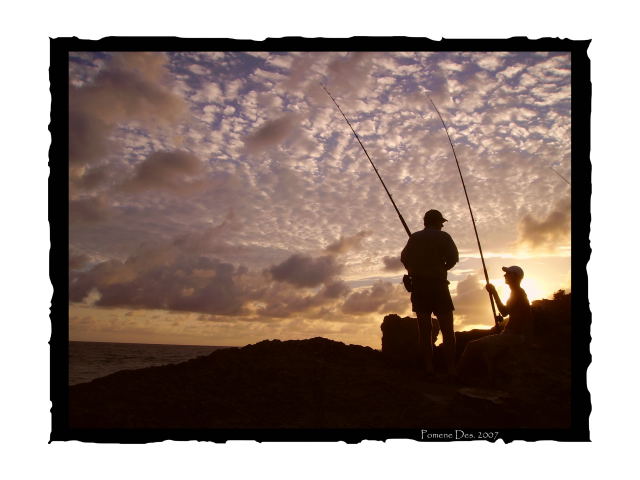
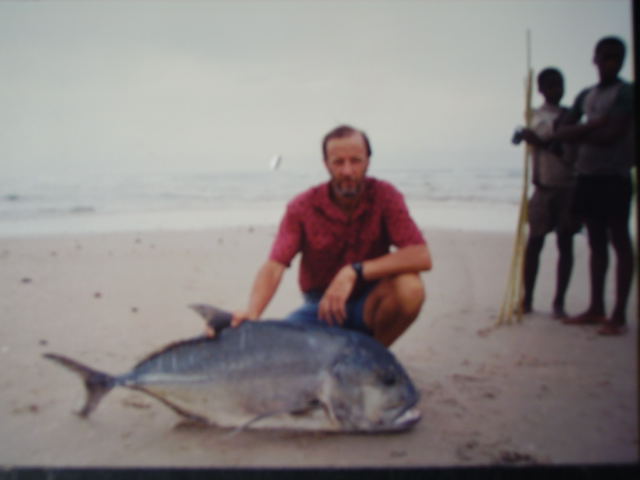 Our
four children were raised in the heat, humidity and unspoilt beauty
of subtropical Zululand. On endless beaches washed by clear, blue,
warm water from the tropics via the Mozambique channel. Waters
ruled, not by Neptune, but by the real king of the ocean, the giant
kingfish, Caranx Ignobilis.
Our
four children were raised in the heat, humidity and unspoilt beauty
of subtropical Zululand. On endless beaches washed by clear, blue,
warm water from the tropics via the Mozambique channel. Waters
ruled, not by Neptune, but by the real king of the ocean, the giant
kingfish, Caranx Ignobilis. 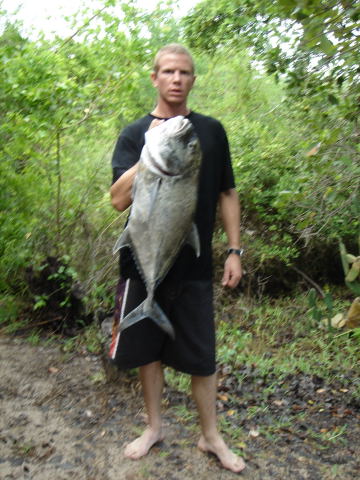 As
was to be expected during the pre-emancipation days, the two boys
became the more enthusiastic anglers, emulating and improving on
their father’s skills.
As
was to be expected during the pre-emancipation days, the two boys
became the more enthusiastic anglers, emulating and improving on
their father’s skills. 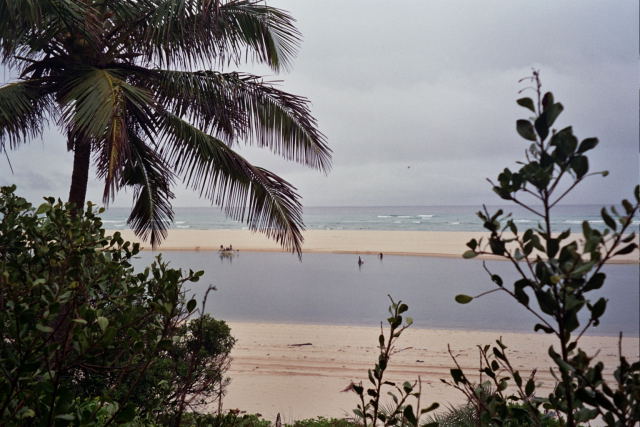
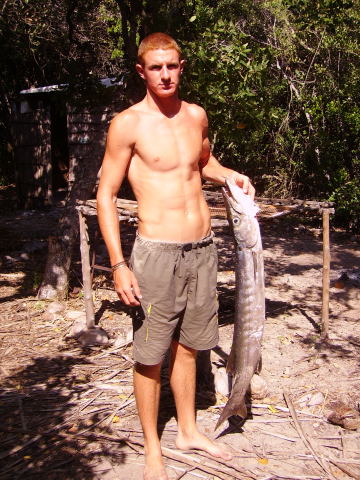 The
second incident involved Henno, at the age of 20, in July 2006.
The
second incident involved Henno, at the age of 20, in July 2006.
